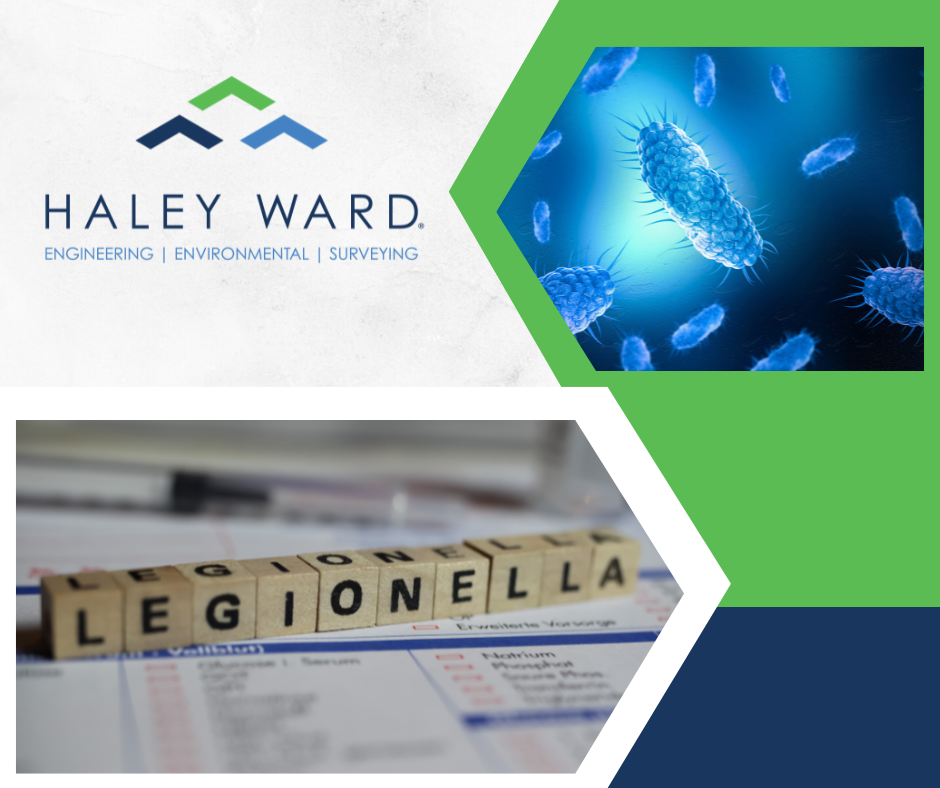AVOIDING SICK BUILDINGS: Legionella

Legionella is naturally occurring type of bacteria found in lakes and streams which cause lung diseases such as Legionnaire’s Disease and Pontiac Fever. Water systems within buildings where legionella is present may provide bacterial growth and transmission, leading to disease outbreaks and deaths. Actively managing building water systems will reduce the likelihood of the growth and transmission of legionella.
Legionella was first identified following an outbreak of a fatal pneumonia among attendees of an American Legion convention in Philadelphia in 1976. This emerging illness was named Legionnaire’s Disease. As many as 221 attendees became sick and 34 died, as a result. An investigation found legionella in the convention center’s air conditioning cooling tower water which caused the outbreak. Recently, an outbreak of Legionnaire’s Disease occurred in Flint, Michigan where as many as 87 people became sick and 12 died. An investigation found an increase in legionella in the public water supply connected to building water systems contributed to the outbreak. The number of reported cases has been on the rise since 2000 with nearly 10,000 cases of documented Legionnaires’ disease in 2018.
Legionnaires Disease has been directly linked to Legionella found in building water systems which is allows for the inhalation of the bacteria found in water droplets. A significant number of outbreaks occur in hotels and healthcare facilities. This may be due to a combination of a diverse and vulnerable populations and a variety of water systems in these facilities which provide the opportunity for legionella to grow and be transmitted.
Legionella is not normally found in nature at levels that cause illness. However, building systems such as air conditioning cooling towers, domestic hot water tanks, water supply pipes, pools, hot tubs, and decorative water fountains are locations where legionella may grow, if not properly managed. Contributing factors which encourage Legionella growth in building include:
- Aging Utilities – Damage and repair to the utility piping may introduce the bacteria into the systems.
- Reduced Water Use –water use standards reduced water flow allowing increased water stagnation and biofilm, which aids in the growth of bacteria
- Domestic Hot Water System temperatures – poorly maintained systems kept at temperatures less than 120°F provide an opportunity for bacteria growth.
- Plumbing Dead-Ends – abandoned lengths connected to actives systems are ideal locations for bacteria growth.
- Poor maintenance and disinfection – Various building standards outline maintenance and disinfection requirements for water systems which can be overlooked.
Healthcare facilities, hotels, or other congregant housing facilities can reduce the risk of disease outbreak by applying a Water Management Program (WMP) to their facility with the support of qualified expertise. A WMP uses the following strategies to determine the potential risk and actions which may minimize the risk.
- Risk Assessment – comprehensive analysis of building water systems
- Risk Control– actionable steps to control identified risks
- Staff Training – accountability for monitoring and maintain water quality.
- Documentation – recording of water system monitoring and testing
Haley Ward and its team of experienced scientists and engineers can provide assessment and management of water systems including water sampling and laboratory testing, inventorying of current and abandoned water systems, development of a WMP, auditing of existing water management programs, and technical support in the event of a disease outbreak.